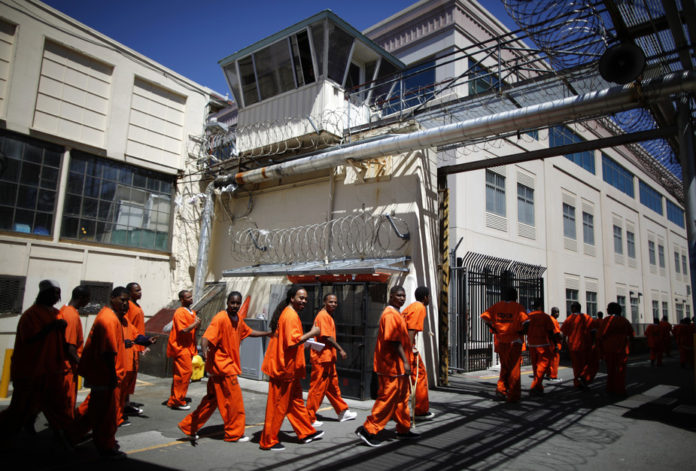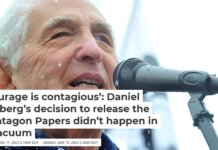
By Barry Krisberg, University of California, Berkeley
On November 4, 2014, Californians will vote on Proposition 47, the Safe Neighborhoods and Schools Act.
The measure would change many crimes from felonies, which generally require prison terms, to misdemeanors that usually carry penalties of probation, fines or very short jail time.
A modest estimate is that Proposition 47 will reduce the California prison population by 10,000 inmates, although there will still be about 125,000 prisoners in the state’s prison system after the reforms take hold. It will save California taxpayers hundreds of millions of dollars and use those savings to support education, mental health and substance abuse counseling, and help for victims of crime.
Proposition 47 is one of the most far reaching pieces of criminal justice reform anywhere in the nation. The initiative may be the beginning of a national trend.
Criminal justice at the ballot box: a history
The Golden State has a long tradition of deciding important social policy questions via the general electoral process.
In the 1970s and 1980s advocates of tougher crime laws used ballot measures to break through the perceived dominance of San Francisco Bay Area liberals in the state legislature.
Almost every election year there were new initiatives that created mandatory prison terms for a range of offenses. The most well-known of these measures was Proposition 184, popularly known as “Three Strikes and You’re Out.” This measure was approved by 71% of voters in the 1994 election. It mandated a life sentence for almost any crime, no matter how minor, if the defendant had two prior convictions for crimes defined as serious or violent by the California Penal Code. Another 28 states have similar laws.
As a result of these laws, California’s prison population soared – increasing dramatically between 1980 and 1995. But this came at an added cost of more than US$8 billion annually. The increase in the number of prisoners led to the construction of new prisons. Even these new prisons could not avoid severe crowding conditions.
Money played a huge role in determining the outcome of these measures at the ballot box.
The television and radio spots often contained flagrant misrepresentations to sway voters to support these “tough on crime. For example, in 2004 reformers managed to get Proposition 66 on the ballot, a measure that would require that the “third strike” putting someone behind bars for life be a violent crime. In response, then Governor Arnold Schwarzenegger saturated television with ads claiming that Proposition 66 would release 26,000 dangerous criminals. The TV spots showed the pictures of notorious criminals who were already sentenced to death and would not be effected by Prop 66. The opponents of Prop 66 poured over US$3 million into the print and electronic campaign. Public opinion turned negative on Prop 66 in the days before election and the measure was ultimately defeated.
Progressives were never able to to marshal the funds to compete with the heavily financed get-tough measures. What’s more, the measures that were passed were written as constitutional amendments, making it nearly impossible for California’s legislature to amend or overturn them.
Voting in reform
Frustrated by the lack of action by Sacramento politicians on almost any meaningful criminal justice issues, liberal reformers have themselves started to go to the voters directly.
In 2000 Proposition 36 advanced the idea that minor drug offenders could avoid prison and be diverted into community-based substance abuse programs. Most criminal justice officials opposed the measure, but despite that it was approved by over 60% of voters). Proposition 36 benefited from a media campaign financed by billionaire George Soros and the Drug Policy Alliance.
Proposition 215 in 1996 decriminalized marijuana for medical use and in 2012 another ballot measure, “Changes in the ‘Three Strikes’ Law” (also called Proposition 36) reduced the harshest penalties introduced by Proposition 184.
Inevitably over the course of these campaigns progressive reformers have become better at raising money and competing in California’s vast media market. However, initiatives increasing penalties for sex offenders and efforts to increase the time served by life sentenced inmates before they are eligible for parole are still very popular with the public.
Which brings us to Prop 47. The Yes campaign has been able to bring together a wide assortment of interest groups that had not agreed about criminal justice policy in the past. Recent campaigns to challenge capital punishment and to reform the three-strikes law helped forge a broad coalition of victims’ groups and powerful allies. Organized labor groups, the California Teachers Association, the California Nurses Association and state Democratic Party are all supporting Proposition 47.
Some of the most vocal advocates of Proposition 47 are San Francisco district attorney George Gascón, Santa Clara district attorney Jeff Rosen and former San Diego Police Chief William Landsdowne. These respected law enforcement officials view California’s mass incarceration as fiscally unsustainable and harmful to low income communities. Even prominent national conservative figures like Newt Gingrich and Rand Paul have announced their support for Proposition 47 because current laws waste taxpayers’ dollars and do not curtail drug use. They would prefer a focus on violent offenders.
While Senator Dianne Feinstein has spoken out against Prop 47, many other state leaders such Governor Jerry Brown and Attorney General Kamala Harris have remained neutral. One traditionally powerful lobby group, the Corrections Peace Officers Association has also taken no position on Proposition 47. What is significant is that in the past California governors and attorneys general have almost always sided with the tough-on-crime position. I interpret this neutrality as tacit support for Prop 47. Critically, their silence has hampered fundraising for the No camp.
In addition to a broad coalition of supporters – including most newspaper editorial boards, the Prop 47 campaign has raised over US$10 million. In contrast, their opponents (who are mostly police chiefs and a few district attorneys) have raised about US$500,000. Their arguments seem to be getting little traction.
The right time for the right proposition?
California has been suffering a severe economic recession and government services at every level have been slashed. Tuition at state colleges and universities have skyrocketed and some cities have been on the edge of bankruptcy. Many cities and towns have been forced to cut basic services including police and fire departments. Recent tax increases have helped but they are temporary. California spends $12 billion per year on corrections and rehabilitation, making reforms that could cut the bill to taxpayers all the more appealing. This is almost as much as the state pays for its public universities.
But it’s not just about the money. Public confidence in the state’s prison policies has eroded. Even the US Supreme Court declared the prisons so crowded that it ordered the release of some inmates. This dramatic judgment has led Californians to reconsider who should go to prison. Harsh criminal justice laws have been on the books long enough for Californians to be able to weigh the cost and benefit of these measures. The well-publicized failure and financial drain of the War on Drugs has created has an environment in which voters are seeking new ideas.
More generally, the popularity of Proposition 47 resonates with a growing distrust of government overreach into citizens’ lives and a preference for decision making that is closer to where people live. The demographics of the California voting public – younger, more diverse, and more highly educated than ever before – are also favorable towards more progressive social policies. If California helped lead the charge in favor of these tough on crime laws, the state could lead the charge in the opposite direction.
California has traditionally been ahead of national developments, but a good predictor of future political trends. Since California is the largest state in the country, if Prop 47 passes other states may well follow suit. As California goes, so goes the nation.
![]()
Barry Krisberg does not work for, consult to, own shares in or receive funding from any company or organisation that would benefit from this article, and has no relevant affiliations.
This article was originally published on The Conversation.
Read the original article.




















